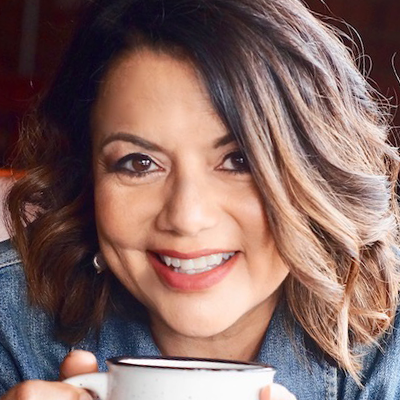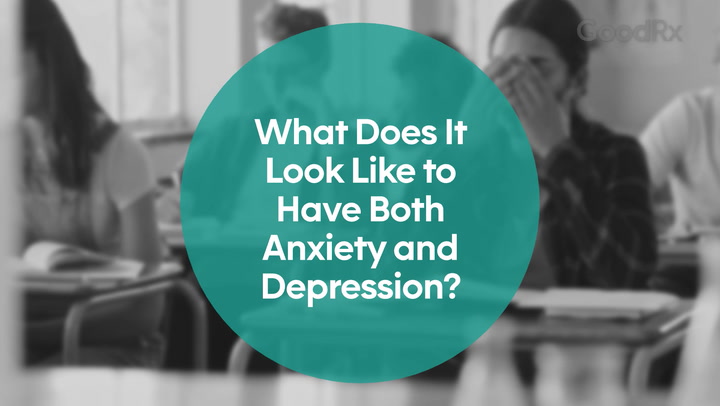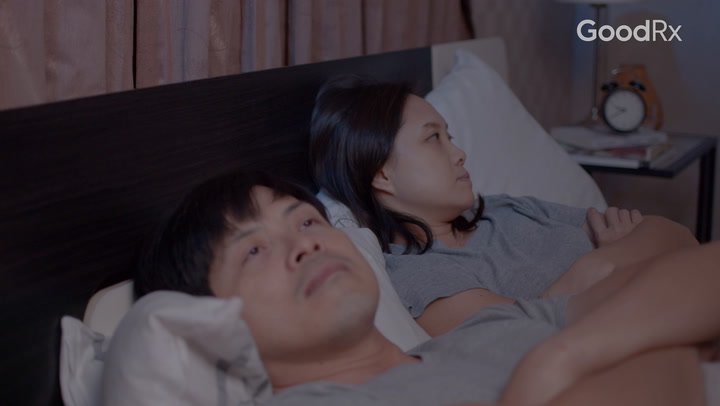
The 4 Major Attachment Styles and What They Mean for Your Relationships
Key takeaways:
There are four attachment styles: secure, preoccupied, dismissive, and fearful.
Your relationship with your childhood caregivers influences the attachment style you develop as an adult.
According to some experts, you can work on developing a more secure style.
Attachment theory is a concept that dates back to the 1940s but is still relevant today. It’s the idea that your emotional bonds with childhood caregivers can impact your relationships as an adult.
Attachment styles describe the ways you interact with other adults in close relationships. You may need constant reassurance from your partner or feel smothered by your best friend. You may avoid relationships altogether for fear of getting hurt. These scenarios describe different attachment styles.
The more aware you become of your attachment style, the better your chances of forging healthy adult relationships. In this post, we will cover the four attachment styles, how attachment styles are used in therapy, and how you can become more secure in your relationships.
Search and compare options
What are the different attachment styles?
Early attachment theory researchers identified and named three attachment styles: ambivalent, avoidant, and secure. A fourth style, disorganized attachment, was added later. The researchers developed these by studying how young children interacted with their parents.
Since then, experts sometimes use updated labels to describe attachment styles in adults, says Dr. Hal Shorey, an associate professor of clinical psychology. However, you will find many of these attachment style terms used interchangeably.
The four main attachment styles are:
Secure: If you feel confident in your relationships, your attachment style is probably secure. You are comfortable being independent and giving your partner space. But you also ask for support when you need it and provide support when they ask for it.
Preoccupied (anxious/ambivalent): If you spend a lot of time worrying about your relationship, your attachment style may be preoccupied. You may fear being alone or being abandoned by your partner. You crave reassurance about your relationship.
Dismissive (avoidant): If you avoid emotional intimacy, you may have a dismissive attachment style. You may find yourself in and out of romantic relationships because you won’t let those relationships get too serious.
Fearful (disorganized): If your caregivers displayed scary behavior — like abuse, neglect, or high anxiety — you may develop a fearful attachment style. With a fearful style, you may want to be close to people and avoid relationships, all at the same time.
How is insecure attachment developed?
Attachment styles develop based on your relationship with early caregivers. If your caregivers were not able to meet your needs as a young child, you are more likely to develop an insecure attachment style. And insecure attachment in childhood often leads to insecure attachment in adulthood.
There are a variety of factors that can lead to insecure attachment. For example, you may have been abused or neglected by your primary caregivers. These experiences are more likely to lead to an insecure attachment style. You learned very early on that others can’t be trusted.
But even if your parents didn’t cause direct harm, you can still develop an insecure attachment. Sometimes, parents have trouble understanding and responding to a child’s signals when they need attention. When parents regularly miss what their child needs, the child may learn over time that they can’t rely on their parents.
Read more like this
Explore these related articles, suggested for readers like you.
Keep in mind that insecure attachment styles aren’t necessarily negative, says Shorey. They’re “adaptive” and a way to cope with your environment growing up.
“[Attachment styles] develop to maximize your ability to cope with your environment in childhood,” he says. “They only become problematic when you change the environment, like when you become an adult and have romantic relationships.”
Can a person have more than one attachment style?
Yes, it’s possible to have more than one attachment style. Attachment styles often shift depending on the relationship. For example, you might be secure in a friendship but preoccupied with a romantic partner.
“Most people are going to lie somewhere on the continuum of different styles,” says Shorey. “I like to use the word ‘leaning’ as in ‘secure leaning preoccupied’ or ‘secure leaning dismissive.’”
Tina Setteducate, a licensed marriage and family therapistin California and Colorado, agrees with Shorey.
“Attachment is more of a spectrum, and we don’t all fit into one box of an attachment style,” she says. “Certain relationships can bring out certain aspects of your attachment styles.”
Learning your attachment style can help you understand your relationships. But keep in mind that attachment is just one of many factors that impact your relationships.
“Learn what your style pulls toward, and don't take it too seriously,” says Shorey.
Do certain types of people gravitate toward others with certain attachment styles?
Yes, both Shorey and Setteducate see relationship patterns between people with certain attachment styles. Secure people tend to seek out other secure people, while preoccupied (anxious) styles gravitate toward dismissive (avoidant) types.
People are often drawn to the familiar, says Setteducate, even if the familiar feels bad or hurts.
“Avoidantly attached people bring up fear in anxiously attached people,” she says. “This fear centers around being left or not having their needs met, a fear they know well. We can often see a dynamic where the 'bite fits the wound,’ where what is not healed continues to be brought up.”
“Someone with anxious insecurities is always looking for reassurance from their partner, and they fear abandonment,” Setteducate continues. “The avoidant type wants space and doesn’t want to get too close. I see that match up most often. They bring out each other’s biggest fears.”
While secure types often attract other secure people, they may also partner with a slightly dismissive or slightly preoccupied type, says Shorey.
And people with fearful attachment styles don’t usually gravitate toward a particular attachment style. “Because the fearful style is a disorganized mix of avoidant and anxious attachment, people with this style will not typically have organized relationship patterns,” says Shorey.
Can you feel more confident about your attachment in relationships?
Yes, there are strategies that may make you feel more secure in your relationships. Here are several options you may want to try:
Reflect on secure memories. Spend time thinking about secure moments in your relationships to lower anxiety. In one study, people who reflected on secure-relationship memories over 4 months lowered attachment anxiety.
Reframe negative events to take the positive into account. Look at all of the evidence about a challenging relationship issue. Make a list of both the negative and positive evidence about the situation. Noticing the positives alongside the challenges may help you view difficult experiences in a more balanced way. As a result, you may start to feel more confident about your relationships.
Practice grounding techniques. Try lowering relationship anxiety with grounding activities, such as breathing exercises or role-playing. Grounding can help you feel safer and more secure in your relationships.
Label and express your feelings. Name your feelings during pleasant and unpleasant relationship situations. This will help you become more self-reflective and manage your emotions.
Practice emotional self-regulation. Monitor and manage your emotions when you interact with people. This can promote flexibility in your relationships. It also builds your confidence in your ability to cope with difficult situations.
Help others. Raise your level of empathy and practice emotional flexibility and regulation by helping people in your community. You’ll get to practice responding to anxiety triggers in a healthy way, thus building toward a more secure attachment style.
Can you change your attachment style?
While many experts believe that you can work on becoming more secure, others believe you may not be able to change your style completely.
“The degree to which you can change your style depends on how old you were when your style developed and the degree to which it is hardwired into your emotional system,” says Shorey, who runs a private therapy practice in Pennsylvania.
Say you had a healthy caregiver-child relationship and developed a secure style. But then you became more insecure throughout your teen and young adult years. “You can still get back to that secure style if you work at it in your adult relationships,” says Shorey.
You may also be able to develop what’s called “earned secure attachment.” You can “earn” secure attachment through consistent relationships as an adult. This could be through your relationship with another trusted adult, partner, or therapist. Over time, this can shift an insecure attachment style into secure attachment.
How are attachment styles used in therapy?
Your relationship with a therapist could serve as the foundation for building a more secure attachment style. A therapist-client relationship typically starts with building trust and creating a safe space. As your trust develops, you might become more open and vulnerable about your relationships.
As you and your therapist establish a healthy alliance, your therapist may become a temporary attachment figure for you. This relationship can help you repair lost trust, learn to regulate your emotions, and ultimately cultivate a more secure attachment style.
There are mental health professionals who specialize in attachment theory. They may evaluate your attachment style and then decide the best approach for therapy. Knowing your attachment style can help your therapist address issues such as:
Changing unhealthy coping patterns in your relationships
Helping you find ways to fulfill unmet needs for connection, competence, and independence
Promoting self-compassion
Relieving stress associated with unhealthy responses in relationships
Raising emotional awareness and empathy toward others
The bottom line
Understanding your attachment style can help you improve your adult relationships. You can learn your attachment style — secure, preoccupied, dismissive, or fearful — by working with a therapist. Once you learn your attachment style, you can work toward a more secure attachment style. Just remember, attachment styles aren’t the only factors that impact relationships.
Why trust our experts?



References
American Psychological Association. (n.d.) Attachment style.
Baruch, A., et al. (2020). Healing attachment wounds by being cared for and caring for others. Counseling Today.
Bretherton, I. (1992). The origins of attachment theory: John Bowlby and Mary Ainsworth. Developmental Psychology.
Cassidy, J., et al. (2013). Contributions of attachment theory and research: A framework for future research, translation, and policy. Developmental and Psychopathology.
Duschinsky, R. (2015). The emergence of the disorganized/disoriented (d) attachment classification, 1979–1982. History of Psychology.
Fraley, R. C., et al. (2011). Patterns of stability in adult attachment: An empirical test of two models of continuity and change. Journal of Personality and Social Psychology.
Guina, J. (2018). The talking cure of avoidant personality disorder: Remission through earned-secure attachment. American Journal of Psychotherapy.
Hong, Y. R., et al. (2012). Impact of attachment, temperament and parenting on human development. Korean Journal of Pediatrics.
Hudson, N. W., et al. (2020). Volitional change in adult attachment: Can people who want to become less anxious and avoidant move closer towards realizing those goals?. European Journal of Personality.
National Collaborating Centre for Mental Health. (2015). Children's attachment: Attachment in children and young people who are adopted from care, in care or at high risk of going into care. National Institute for Health and Care Excellence.
Rising Sun Psychological LLC. (n.d.). Home.
Rønnestad, M. H., et al. (2009). An intensive process-outcome study of the interpersonal aspects of psychotherapy. Department of Psychology, University of Oslo.
Setteducate, T. (n.d.). Marriage & family therapist.
Shahab, M. K., et al. (2021). A tangled start: The link between childhood maltreatment, psychopathology, and relationships in adulthood. Child Abuse & Neglect.
Wei, M. (2008). The implications of attachment theory in counseling and psychotherapy. Society for the Advancement of Psychotherapy.
Widener University. (n.d.). Hal Shorey.
For additional resources or to connect with mental health services in your area, call SAMHSA’s National Helpline at 1-800-662-4357. For immediate assistance, call the National Suicide Prevention Lifeline at 988, or text HOME to 741-741 to reach the Crisis Text Line.



























